Genre: Adventure Developer: Warp Publisher: Acclaim Players: 1 Released: 1995
If you ask avid gamers who their favorite Japanese game designer of the 1990s was, most would probably answer along the lines of Shigeru Miyamoto, Yu Suzuki, or Koji Igarashi. The name Kenji Eno, on the other hand, remains more obscure nowadays – although he managed to gain cult status among a very small, eclectic group of video game aficionados. Eno cut his teeth as a game designer at Sunsoft – the unreleased prototype of their NES Superman game that was later turned into Sunman is credited to his name – before he decided to set out to found his own independent game studio, something which was quite unusual in the Japanese video game industry at the time. He also earned himself a reputation as a bit of an “enfant terrible,” both in terms of video game content and in the way he communicated his ideas to publishers and the public. He had a bit of a strained relationship with publishers, famously slighting and burning all bridges with Sony, which effectively resulted in a very close relationship with Sega. This story is a tale for another time, but the game that first earned him a reputation, not only as a cult game designer but also as someone who wasn’t intending to play by established industry rules, was D: a gothic horror adventure game originally developed for the 3DO and later ported to the Sony PlayStation and the Sega Saturn the same year.
D tells the story of Laura Harris, a college student living in San Francisco and the only daughter of Richter Harris, a famous doctor and director of a well-reputed hospital at the outskirts of Los Angeles. When her father suddenly starts a mass murder spree and locks himself in said hospital, Laura rushes to the scene of the crime, trying to find out what exactly happened. When entering the hospital, Laura recoils in shock from the sight of dead bodies in the lobby, only to suddenly find herself transported into the halls of a Gothic castle. Why did Doctor Harris kill all these people, and what is this mysterious place? The disembodied voice of her father tries to urge her to leave, but finding the entrance locked, the woman sets out to get to the bottom of the mystery. And she’d better not dawdle, because the clock is ticking…
And I mean that quite literally, because D is on a timer. A pocket watch in your inventory relentlessly ticks the seconds away. You only have two hours to solve the riddles of this strange place. The game moves in real-time and there is neither a way to rewind nor to save. You have to finish the game in one sitting within the two-hour limit, or else it’s game over.
From a modern perspective, not being able to save at all might be perceived as a game design sin, but considering the game’s short length this hardly matters at all. In fact, the tight time limit actually works in the games favor, applying some pressure on the player to find his way through the gloomy castle walls and its hallways devoid of life but filled with spooky ambiance. You can’t really die, but you could still describe the game as an early attempt at survival horror. D was released only a few months before Resident Evil came and changed the face of that particular subgenre forever. Gameplay-wise, it’s more like Myst with a Gothic-horror spin.
Still, it kind of works. You steer Laura surprisingly fluently through the pre-rendered hallways from a first-person-perspective, interacting with the scenery and solving puzzles along the way. If you get stuck, the developers have managed to include a hint system that works quite well as far as immersion goes. Laura’s compact can be used from the inventory to show an image something you will have to interact with next. With each hint the compact cracks; after the third use it shatters into pieces.
There are, of course, a few downsides to the whole experience. Laura’s walking pace is very slow, which becomes even more irritating when you keep the always ticking clock in mind. Once you know what to do though, the game is relatively short. A player who knows what he’s doing can solve the mystery in little over an hour, and if you know what you are doing, you can solve many puzzles in the game before finding the accompanying hint, because there is no randomization. Probably in order to counterbalance that, there are two timing-based puzzles and a bit concerning a rotating room that can be immensely time-consuming, creating a bit of a drag on the overall enjoyment.
This significantly lowers the D’s replay value. The only thing worth of note are four glowing bugs hidden in the game that, when found, unlock a repressed memory of Laura’s that ties into the dark secret of her father’s madness and the mysterious castle. The very last of which was actually quite shocking at the time (and, to a degree, still is) and is part of the reason behind Kenji Eno’s reputation in the industry. As he stated in an interview, he had shown this scene to no one else in the company before release and smuggled it into the game at the very last minute. He deliberately had sent a different master for approval and then swapped out the discs with the uncensored content before they went to print.
Something that holds up surprisingly well are the pre-rendered graphics. The castle is adequately gloomy, and although nothing jumps out at you, the whole scenery and what few decorations there are – a painting here, a picture frame there, and let’s not forget the decaying human corpses – look quite well for a pre-rendered game from the mid-’90s and are still enjoyable even today. However, the graphics took a hit when they were converted to the Saturn. The image quality is grainy, everything is tinted in a dark blue hue, and the overall brightness has been lowered noticeably. That actually makes the Saturn version quite hard to play on modern flat screen TV sets, where everything gets so dark that it’s hard to make out the details in some of the scenes. Playing on an old-fashioned CRT mitigates that somewhat, even though the port really overdoes it with its dark blue tint in some of the dungeon halls. Also, the rendered human models haven’t aged quite as well, so it’s a blessing that you hardly see any at all.
At certain points, Laura’s father calls out to her and espouses some exposition in the form of warnings and vague hints on the reasons behind his actions. The voice acting is a bit hokey, but surprisingly decent for its time, and at least early on it creates a sense of foreboding that just adds to the wrongness of the whole situation.
The glue that holds everything together is the sound design though. Kenji Eno was regarded as a well accomplished electronic musician, and it shows in the way he handled the acoustics of the game. The music is unobtrusive most of the time; quite often there is no ambient soundtrack at all, apart from Laura’s footsteps, dripping water or the shuffling of wood over wood when opening or closing a drawer, which underscores this feeling of loneliness and lifelessness in the castle and manages to create a heavy and foreboding atmosphere. This makes it only more notable when there is a moody track introducing a new location though, or a sudden musical stinger at a moment of surprise. It’s nothing that really stands out on its own, but supplements the atmosphere and makes everything come together in just the right way.
D can be considered to be a flawed gem. On the one hand, it has a few shortcomings in game design and the graphics haven’t aged all too well. On the other hand, the sound ambiance is great, and it manages to create an eerie atmosphere that even from a modern standpoint holds up surprisingly well. Its short length and little to no replay-value might have made it hard to recommend as a full-priced title to buy, but a great recommendation as a rental. In a way, that’s the best way to describe D in a nutshell. It lasts about as long as your typical Hammer-Horror-flick, with a similarly great Gothic-horror atmosphere. While it didn’t set the world on fire and certainly doesn’t satisfy everyone’s tastes, there’s nothing wrong with enjoying it for what little time it lasts.
Score: 7 out of 10

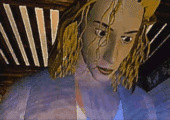
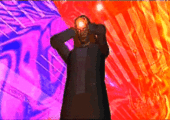
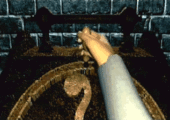

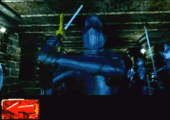
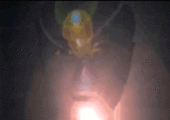
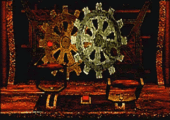
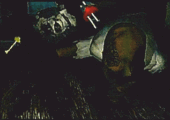

Recent Comments